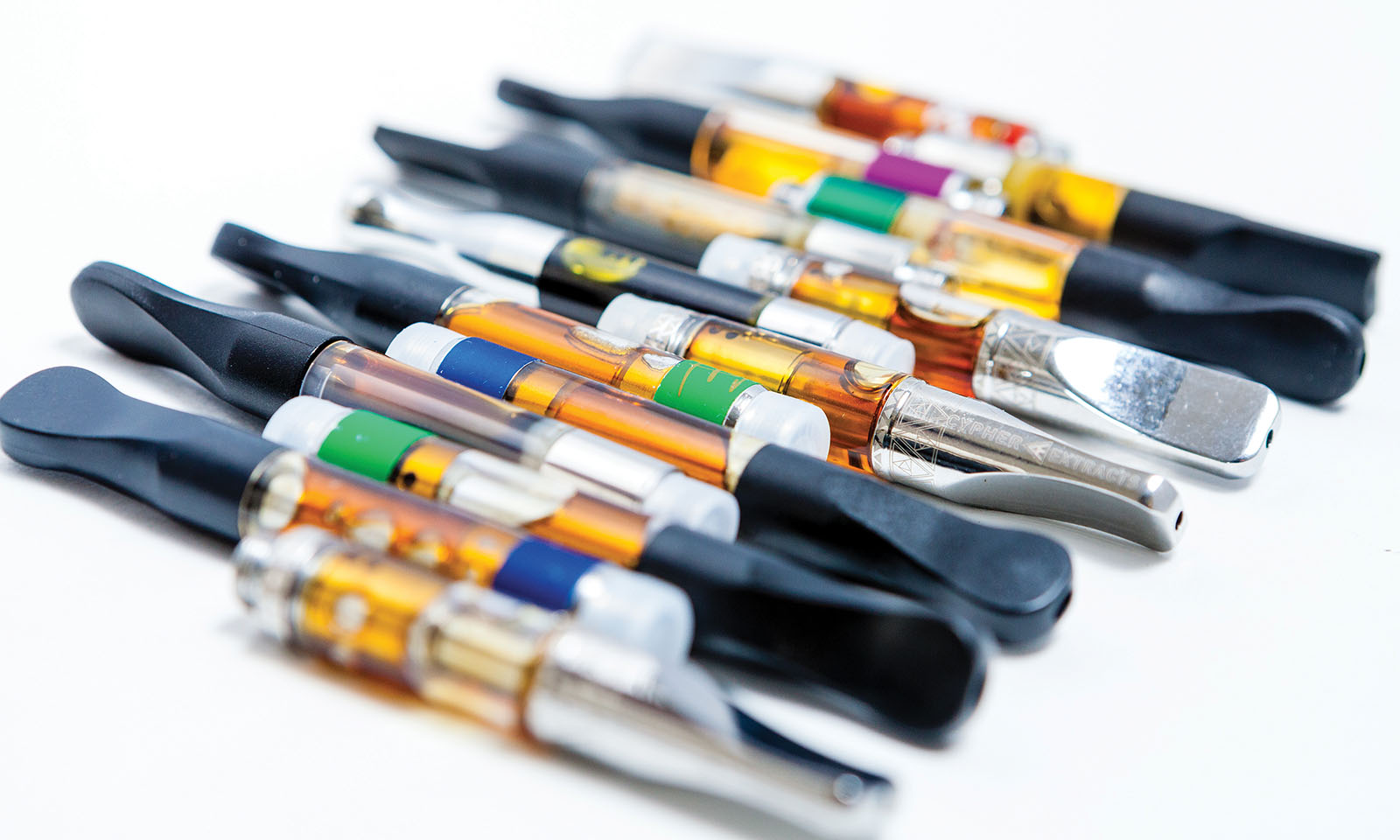Clash of the Cartridges
A legal dispute between two cannabis companies has big implications for how the industry approaches research and safety.
The popularity of small, portable vaporizer “pens” has become a national phenomenon, with digital concentrate vaping rapidly replacing joint smoking as the entry point for new cannabis users. But are these devices (and the concentrates inside them) safe?
Jahan Marcu, Ph.D., is the chief science advisor at Americans for Safe Access. In 2015 he wrote a piece for Project CBD about vape pen safety that warns “there may be a hidden downside to vape pens.” Within the article, Marcu points out that the pens themselves are primarily made in China without any meaningful regulatory oversight.
The big risk? Low-quality hardware that smolders oil instead of vaporizing it.
“Vape pens contain a battery-operated heating mechanism, which at high temperatures can transform solvents, flavoring agents, and various vape oil additives into carcinogens and other dangerous toxins,” Marcu wrote. “Most of the vape pens that have flooded the commercial market may not be true vaporizers.”
Samantha Miller and Jeremy Green from hmbldt (now re-named dosist), which makes a portable vaporizer “made of all medical-grade components,” say that vaporization is more than just heat.
“Temperature and proximity to the material being vaporized must both be considered,” Miller says, citing the importance of understanding the difference between conduction (direct contact heat) and convection (indirect heat) for both dry herb and oil vaporizers.
According to Green, who has been involved with “e-cigs since they became popular,” the cartridges used by a majority of the portable vaporizer market are not intended for cannabis.
“[The cartridges] were not made for cannabis oils,” Green says. “Cannabis oil has a lower vaporization temperature than those [tobacco] oils. Most e-cigs don’t have temperature controls. They will go up to maximum power after about a five to seven second inhale, and at maximum power they may heat up to 900 degrees Fahrenheit, unless they have a microprocessor inside.”
Vape Safety Information: Dangerously Hazy
A lawsuit filed against cannabis industry titan Organa Brands by Arizona dispensary chain Harvest of AZ highlights the friction between public safety and profits when it comes to research and product testing around this new frontier of cannabis consumer safety.
Harvest’s lawsuit claims that Organa Brands and their subsidiary O.PenVAPE created fake news sources online to disseminate inaccurate information about competitors’ products, including the CO2 cannabis oil cartridges Harvest sells under the name Dream Steam.
Steve White, CEO of Harvest, says the web pages spread misinformation about his company’s products.
“Specifically, what they did was a practice in internet marketing called ‘flogging’ where people set up fake research pages and Facebook groups to promote their own products while purporting to do something else,” he says, adding that after a year of litigation, Harvest learned the poster was “someone related to O.PenVAPE… .”
We reached out to O.PenVAPE for a comment and received a terse email from Chris Driessen, the president of Organa Brands and a co-owner of the company, saying that they “do not comment on pending lawsuits, including those of a frivolous nature.”
Earlier this year, O.Pen’s attorney John Moynan told Marijuana Business Daily that the case was “entirely without merit” and a “financial shakedown,” but he refused to tell them any of the specifics.
Much of the alleged misinformation focused on the dangers of thinning agents commonly used in cannabis oil cartridges and e-cigarettes. In response to the online attacks, Harvest’s management company, Randy Taylor Consulting, funded a study into the safety of various thinning agents.
According to their research, published in the Journal of Alternative and Complementary Medicine, one four-second puff on a cartridge using PEG 400 produced nearly as much of the carcinogen formaldehyde as an entire cigarette, whereas the formaldehyde produced by MCT oil was negligible.
According to MassRoots, until last year, O.Pen used polyethylene glycol (PEG 400) as a thinning agent, but due to controversy around its safety they stopped using it in their reserve line.
Previous studies, like Harvard’s 2015 review of e-cigarettes, looked at added flavorings and found 75 percent of samples contained diacetyl, “a flavoring chemical linked to cases of severe respiratory disease.”
But ultimately, regardless of whose vape is more dangerous, this lawsuit demonstrates that when internet message boards, corporate-funded scientific studies and litigation influences what is considered safe, the customer almost always ends up confused behind a wall of hot air.
Originally published in Issue 28 of Cannabis Now. LEARN MORE
TELL US, do you know what’s inside your vaporizers?



















